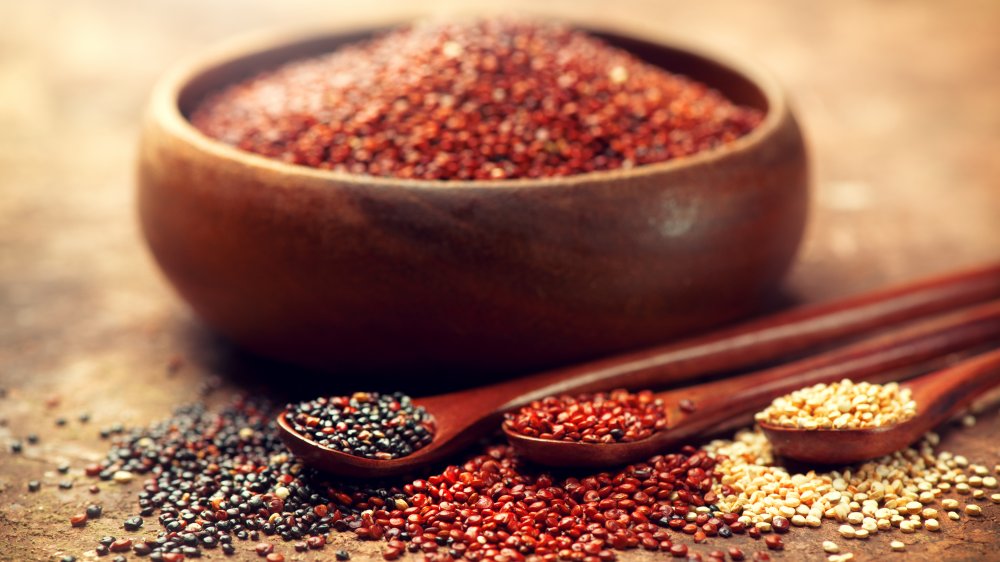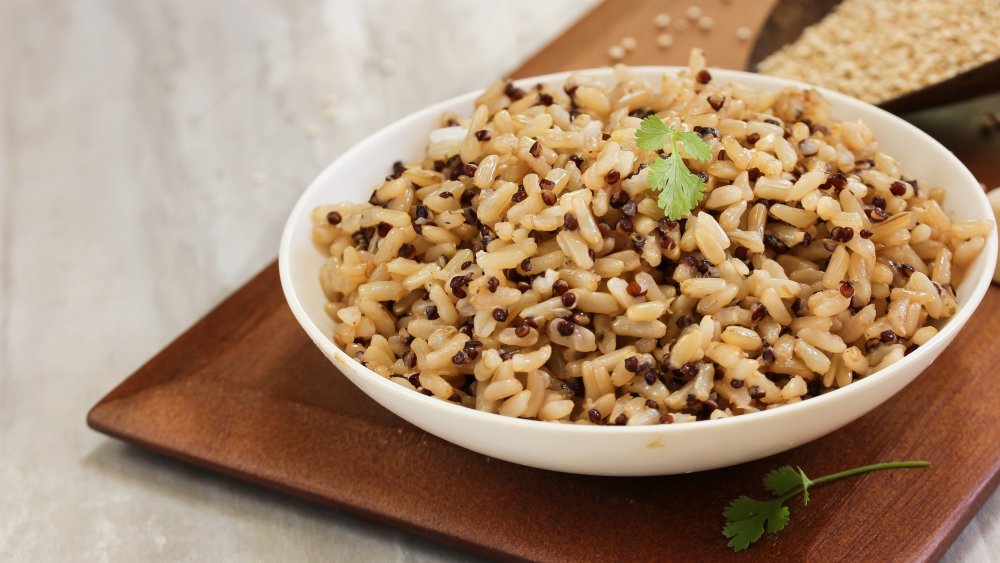Is Quinoa Better For You Than Rice?
There are certainly pros and cons to both quinoa and rice. Whether or not one is healthier than the other also largely depends on each individual person and their health needs. While many people think of quinoa as a grain, it is actually a seed, and since it's a seed that's related to beets and spinach, it does naturally pack in more and different nutrients from rice (via Healthline).
Different kinds of rice also have different kinds of nutrients and benefits as well. Brown rice and wild rice tend to be the healthiest types of rice. Both are high in fiber, antioxidants, and nutrients like magnesium and manganese. Wild rice has all nine essential amino acids and twice the amount of protein of brown rice, which makes it a great addition to meals (via Reader's Digest).
White rice is easily the least healthy option of rice, especially when compared to quinoa. Though it is delicious and affordable, white rice is a highly refined starch with little nutritional value. White rice is also high on the glycemic index, which means it can cause your blood sugar to spike and fall quickly (via MyRecipes).
The health benefits of quinoa
Quinoa is pretty comparable to wild rice. The major exception is that quinoa is slightly higher in calories than wild rice. However, white rice holds the dubious title of "highest in calories," however. The nutrition of quinoa is also a bit better. Both wild rice and quinoa have all nine essential amino acids, but quinoa has some other minerals like iron, potassium, calcium, and zinc.
Quinoa is high in protein as a pseudo-cereal and seed and is a complete protein, which makes it a great addition to a vegetarian or vegan diet.
If packing in as many nutrients as you possibly can is key for your diet, then quinoa is clearly the winner here. If you love rice and just want a slightly healthier option than white rice, then brown or wild rice are both good options too — just keep in mind that you might miss out on some of the minerals that quinoa offers.

